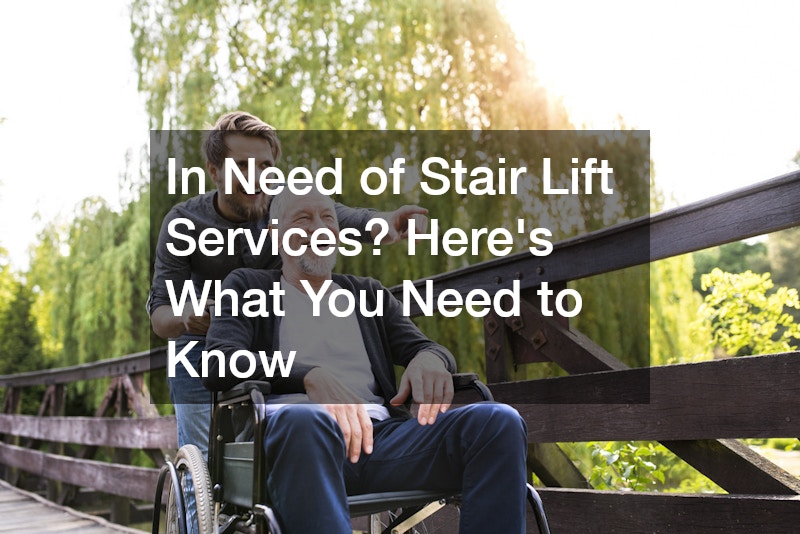Comfort in the Golden Years
As our global population ages, the demand for effective elder life solutions that ensure comfort, accessibility, and dignity grows greater every day. A comfortable elder life is not merely about addressing medical needs—it’s about enabling independence, fostering emotional well-being, and preserving the simple joys of daily living. In this article, we examine 10 key elder life solutions that form a holistic support system for seniors. From specialized medical care like stroke rehabilitation and chiropractic adjustments, to mobility aids, smart-home adaptations, dental and financial planning, and physical activity strategies—each solution plays a vital role in helping seniors age with grace. Together, they create a framework not only for surviving but thriving in the later chapters of life.
As you explore each section, you’ll see how these solutions intersect and reinforce one another. Brightening living spaces with better lighting also supports vision care. Therapeutic mobility aids complement physical therapy. Financial planning makes quality dental services and home modifications affordable. Viewing these solutions as interconnected—rather than standalone fixes—leads to long-term comfort, health, and happiness for older adults.
This approach also benefits caregivers and family members, who often play a pivotal role in supporting elderly loved ones. A well-structured system of elder care lightens their burden and helps them provide consistent, safe, and compassionate care. It reinforces the message that elder care is not about managing decline, but about enabling resilience, purpose, and continued engagement in life.
1. What Are the Top Stroke Rehabilitation Elder Life Solutions?
Stroke recovery often sets the tone for seniors’ future independence. Effective stroke rehabilitation relies on a team-based, personalized approach: physical therapy to rebuild strength and balance, occupational therapy to relearn daily tasks, and speech therapy to restore communication skills. Goal-oriented rehab plans help elders regain mobility gradually—starting with small targets like standing unassisted, then progressing to walking, stair climbing, or resuming hobbies like gardening.
Recent innovations such as robotic-assisted gait training, virtual reality rehab games, and remote-monitoring tele-therapy have expanded access to rehabilitation—especially in rural areas or for those with limited mobility. These advances allow seniors to do meaningful therapy in their own homes, with real-time feedback and motivational interfaces. When combined with traditional rehab and supported by caregivers who learn proper techniques (like safe transfer methods, in-home exercise support, and emotional encouragement), this multifaceted approach greatly improves outcomes and reinforces confidence for the long haul.
Equally important is the emotional and cognitive dimension of stroke recovery. Depression and anxiety are common after a stroke, and integrated support from mental health professionals, group therapy, or even art and music therapy can significantly enhance emotional resilience. Combining physical recovery with emotional healing completes the circle of effective stroke rehabilitation.
2. How Can Technology Help Improve the Quality of Life for Elders?

Technology plays a transformative role in elder life solutions, especially in the home environment. A stair lift, for example, is a simple yet powerful device that allows seniors to safely access multiple levels without the risk of falls or the strain of climbing. It restores autonomy and enables older adults to maintain full use of their homes, fostering independence and reducing stress for both elders and their caregivers.
Beyond stair lifts, a wide range of smart tools support aging effectively: voice-activated home assistants that control lighting and heating, wearable fall-detection devices that alert caregivers or emergency services, medication-reminder systems synchronized with smartphones, and user-friendly video-call platforms to maintain social connections. When thoughtfully integrated with safety features—like automatic night-lights, emergency alarms, or textured, slip-resistant flooring—technology empowers seniors to live independently and confidently. Supplementing home tech with these features ensures ongoing comfort and peace of mind.
As technology evolves, digital literacy programs for older adults are becoming essential. Training sessions tailored to seniors’ learning styles help them feel confident using smartphones, managing virtual healthcare appointments, and staying connected with loved ones—closing the digital divide and reducing social isolation.
3. What Are the Best Mobility Aids Available Today?
Preserving mobility is fundamental to quality elder life. Adaptive vans, equipped with ramps or wheelchair lifts, offer seniors the opportunity to get around easily and attend appointments, social activities, or religious services—without depending on others. The freedom to drive or ride comfortably and safely enhances emotional health and prevents isolation, especially in communities where public transit is limited.
Complementing adaptive transportation are advanced walking aids: rollators with ergonomic handles and brakes, mobility scooters for longer distances, walkers tailored for uneven terrain, and custom orthotics to support foot and gait comfort. Each tool addresses specific mobility limitations—pain, instability, fatigue—and encourages continued movement and engagement. Regular reevaluation by health professionals ensures that as conditions change, elders have the most suitable aids to match their current strength and goals.
Additionally, mobility aids are most effective when paired with safe home modifications—like grab bars, wheelchair-accessible bathrooms, and threshold ramps. Creating a seamless, mobility-friendly environment both indoors and outdoors helps seniors feel secure and encourages them to stay physically and socially active.
4. What Elder Life Solutions Can Aid in Navigating the World?

Clear vision is essential for independent living. One of the most immediate elder life solutions is maintaining up-to-date eyewear—whether reading glasses, bifocals, or specialized lenses for low-vision conditions like macular degeneration or glaucoma. Well-fitted corrective glasses can mean the difference between navigating a staircase confidently and fearing a fall.
In addition to eyewear, environmental adaptations further ease navigation: installing high-contrast stair treads, adding clear lighting in hallways, arranging furniture to create open walkways, and using tactile signage or voice-guided navigation apps in shared living spaces. Seniors with vision impairment may also benefit from magnifying devices, Braille-style labeling, or large-print clocks, phones, and remote controls. Taken together, these tools help elders explore and engage with their surroundings—reducing anxiety and promoting autonomy.
Partnering with low-vision specialists or occupational therapists can provide personalized strategies for navigating both indoor and outdoor spaces. These professionals can recommend specific devices and layout adjustments that make everyday movement safer and more intuitive.
5. How Can Financial Planning Ensure a Comfortable Elder Life?
Ensuring financial security is a powerful enabler of comfort in later life. A thorough elder life solution includes planning for ongoing costs like housing, medical care, mobility aids, and key services such as dental services, which may include preventive care, cleanings, fillings, or dentures. Transparent budgeting and advanced planning remove ambiguity and stress when unexpected health needs arise.
Working with a financial advisor experienced in elder care can help structure retirement income, explore government programs (such as Medicare, Medicaid, or low-income dental assistance), and plan for long-term care or home modifications. Insurance strategies that cover hearing aids, vision care, and oral treatments ensure that seniors can access vital care without financial hardship. Thoughtful planning also supports legacy goals, allowing seniors to age with dignity, peace of mind, and access to the best-quality services available.
Establishing legal safeguards such as powers of attorney, living wills, and estate planning is also crucial. These documents protect elders’ wishes and reduce confusion for families during critical moments, reinforcing autonomy and providing financial and emotional clarity for all involved.
6. What Healthcare Services Are Essential for the Elderly?

Core healthcare services are central to sustaining well-being in older age. Ongoing physical therapy rehab focused on joint mobility, strength, and balance helps manage chronic conditions like arthritis and osteoporosis. These programs can delay functional decline and reduce the likelihood of falls—one of the most common causes of elder injury.
Equally important are preventive screenings—including blood pressure checks, vision and hearing exams, cancer screenings, and bone-density testing—and integrated support from occupational therapy, nutritional counseling, and mental health care. Including palliative or hospice care in advanced planning offers comfort in challenging health scenarios. Collectively, these services form a comprehensive elder life solution strategy that addresses both physical and emotional health, empowering seniors to remain active, engaged, and in control of their health.
Telehealth has further revolutionized access to healthcare for seniors, offering remote consultations, follow-up visits, and therapy sessions. These services eliminate transportation barriers, reduce costs, and ensure continuity of care—especially for those with limited mobility or in underserved areas.
7. How Can Elder Life Solutions Make Life More Comfortable?
As aging bodies adapt to physical changes, comfort-focused solutions become increasingly important. Chiropractic adjustments, when offered by licensed professionals experienced in senior care, can relieve chronic pain, promote better spinal alignment, and reduce joint stiffness. These adjustments help seniors maintain mobility, posture, and functional range—making routine tasks like dressing or walking far easier.
Comfort-enhancing strategies extend to the living environment as well. Adjustable-height beds that ease getting in and out, kitchen tools with larger grips and ergonomic design, cushioned seating pads, temperature-controlled footwear, and soft nighttime lighting reduce strain and improve comfort. These elder life solutions create an environment that minimizes discomfort and maximizes enjoyment in daily living, making the later years less about coping and more about comfort.
Personalized pain management plans—including gentle massage therapy, acupuncture, or anti-inflammatory nutrition—can be integrated to further improve quality of life. When comfort becomes the foundation, seniors are more likely to stay engaged, sleep better, and maintain a positive outlook.
8. What Role Does a Dentist Play in Elder Life Solutions?

Oral health is deeply linked to overall quality of life for seniors. A cosmetic dentist specializing in senior dental care provides solutions that restore chewing ability, prevent nutritional deficits, and boost self-confidence—with treatments like dental implants, partial or full dentures, and gentle gum care. These solutions improve social comfort, speech, and enjoyment of food.
Routine dental exams also offer “window” insights into systemic health, detecting early signs of illnesses like cardiovascular disease or diabetes. As elders transition in function, tailored dental hygiene routines—using specially formulated toothpaste, mouth rinses, or soft-bristle brushes—become critical. Accessing affordable, mobile, or community-based clinics ensures that oral care is not a luxury but a standard component of elder life solutions that preserve dignity and holistic well-being.
Additionally, fostering consistent dental routines through caregiver education and visual reminders—such as checklists or color-coded tools—can significantly increase adherence. Good oral health supports digestion, immune function, and overall vitality.
9. How Does Exercise Contribute to a Comfortable Elder Life?
Consistent physical movement is one of the most effective elder life solutions for sustaining health and vitality. Low-impact exercise routines—including chair yoga, aquatic classes, tai chi, and gentle stretching—maintain flexibility, cardiovascular function, and mood. These exercises reduce pain, improve range of motion, and enhance day-to-day functioning.
Integrating a chiropractor into this routine enhances results—chiropractic care can address alignments, ease muscle tightness, and support overall posture, enabling a safe and efficient movement practice. Customized routines ensure that as physical capacities evolve, the activity plan evolves too. Seniors who stay active—supported by exercise and chiropractic care—maintain independence longer, experience greater confidence in mobility, and often enjoy improved sleep and emotional health.
10. What Are Dental Health Resources Available for the Elderly?
Complete dental care is central to comfort when aging, and dentures provide a transformative improvement for those who have lost natural teeth. Modern dentures—well-fitted and crafted to mimic a natural bite—restore clarity in speech, stability in eating, and confidence in smiling.
Equally important are accessible dental health resources: sliding-scale clinics, mobile dental vans, and senior-specific dental programs help lower barriers for those with limited mobility or income. Outreach programs that offer free screenings, dental hygiene education, or discounted preventive care play a vital role in elder health. Integrating these services raises oral health standards and supports a broader vision of elder care that emphasizes accessibility, preventative care, and dignity.
Dental health literacy among caregivers and elders alike is another critical factor. Understanding how to clean dentures properly, when to schedule replacements, and how nutrition affects oral tissues can significantly reduce preventable issues and promote long-term oral comfort.
Aging With Grace
Eldercare is most effective when it takes a holistic lens—blending medical treatment, mobility support, adaptive technology, oral health, comfort strategies, and financial foresight. These 10 elder life solutions create a cohesive ecosystem that ensures seniors can live with independence and joy. By implementing this spectrum of solutions thoughtfully, families and care providers honor the dignity of aging, while enabling a meaningful, comfortable, and fulfilling quality of life for elders.


